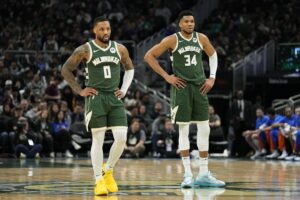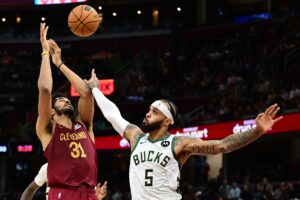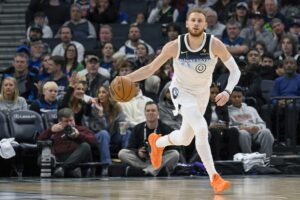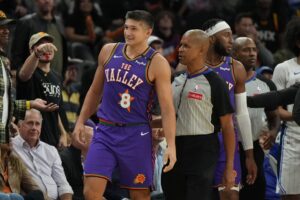It is 2013. The Milwaukee Bucks had made the playoffs for the third time since 2005. Despite not winning a single playoff game, Milwaukee had something to look forward to. The Bucks, a small market, had earned the 15th pick in the NBA draft and had a choice to make. They could either take the safe route or go the long shot with a risky player with ridiculous upside. Bucks general manager, at the time, John Hammond decided to “roll the dice” selecting Giannis Antetokounmpo.
“There’s no question there were safer picks but nothing with this kind of upside, nothing close to this,” Hammond said during a press conference. It’s no question how this heartwarming success story was a long-term process, but does this prove that small markets can be successful or not?
Milwaukee’s Historic Run Doesn’t Cover for the NBA’s Market Disparity
How do Some Teams Rebuild Quicker Than Others?
On April 12th, 2012, Kobe Bryant recorded 34 points in a win against the Golden State Warriors. This was just three games prior to the start of the 2013 NBA playoffs. However, towards the end of the game in the win, Kobe Bryant ruptured his left Achilles’ tendon and missed the rest of the season and a big chunk of the following season, with an additional knee injury.
The Lakers were in a bad situation here. They had to determine between entering a rebuild or building a competitive team that Bryant could play with after recovery. With their lack of championship or trade assets, the Lakers settled on a rebuild. Despite keeping Bryant and Nash for the following season, after center Dwight Howard left, the Lakers were clearly a bottom-feeding team in the races for a top draft pick. Over the next few seasons, the Lakers compiled young assets through the draft, despite keeping Kobe Bryant till 2016.
By the end of the 2017-18 season, the Lakers had still not made the playoffs. However, they had a good young team that just needed a superstar to compete with. They got that superstar in early July in LeBron James. Eventually, they traded some of the young assets for another superstar in Anthony Davis. All that needed to be done to build a championship team was garnering solid role players. This process took time but was much easier to build a championship team stemming from its big market.
Why are Some Teams Afraid of Rebuilding?
We hear the term mediocrity a lot. Some teams use being mediocre to their advantage. Usually, this is due to them being one or two stars away from being a contender, and they draw these stars through their marketability. Other teams, usually smaller markets, have to hope for one of their prospects to blossom into a superstar. If not, they are forced to retool or rebuild. Many teams have the resources to enter a rebuild, but they prefer not to because of previous encounters. Several teams may have made mistakes in past rebuilds that they would prefer to avoid repeating. It also doesn’t leave a great image on the fanbase either, hoping for lottery luck.
Some teams are also very desperate to stay with a winning culture. The San Antonio Spurs have not entered a rebuilding phase since selecting David Robinson in the 1980s. They may be forced to enter one, though, due to their team being solid overall but failing to truly compete in the current Western Conference. Recently, after trading Kawhi Leonard, they have stayed trying to maintain their winning culture.
In recent history, we saw the Charlotte Hornets, Detroit Pistons, Indiana Pacers, and Orlando Magic all be claimed of mediocrity. Three out of the four teams were forced to rebuild while Indiana has kept their core for the most part. It’ll be interesting to see if they choose a direction or if they continue to move with this core. Detroit and Charlotte, both kickstarted their rebuild with lottery luck. Detroit receiving the #1 pick this year while Charlotte received the #3 pick last season that they used to select LaMelo Ball. Orlando’s rebuild is the more recent one and they still have solid young assets but haven’t received the lottery luck yet.
The Bucks Championship is Just Not a Great Example of Small-Market Success
Factors
To be clear, the Milwaukee Bucks main core was mostly built and not bought. They drafted Giannis Antetokounmpo and traded for both Khris Middleton and Jrue Holiday. The role players that got playoff minutes were either traded for or were signed in free agency while not being heavily sought in the market at the time either. However, a lot of things needed to happen for this Bucks run to succeed.
The Bucks risked a lot for this championship run and it almost didn’t happen. If Giannis Antetokounmpo’s injury was more serious, the Bucks were not winning the finals. Thankfully, he was fine and showed his greatness on the big stage. The Bucks risked almost all of their future 1st round picks for the next 7 years. There are conditions to many of the picks, nevertheless, but they may have sacrificed a big part of their future just to keep their superstar happy and have a chance to compete. Through this, they also risked a lot by paying their trio a lot of money. Granted they are a small market, it is better to overpay your best players. However, Milwaukee may not be able to give that trio a better supporting cast in the future, it is a toss-up.
The Sad Truth
Also, you can easily ignore that and just look at how much the championship meant to the city. However, it is not every day that a 2x MVP and a Defensive Player of the Year falls to 15th in the NBA draft. If it does happen, some smaller market teams are hesitant and their hesitance can hold them back. Milwaukee had to rely on the growth of Giannis and Middleton when acquiring them to choose a direction back in 2013. Their front offices deserve plenty of credit for this run, as they were able to convince their stars to stay. They also got a solid coach, despite his flaws, that helped them forward their success.
If 2x MVPs were falling off trees in the NBA draft, marketability would not be an issue. At times, teams also want to take the safer option, which explains why Antetokounmpo fell to 15th, outside the lottery. If they do take the safer option, it allows them to avoid potential draft “busts”. This further boosts their credibility over risking a lot to draft someone with ridiculous upside.
Main Photo:
Embed from Getty Images






